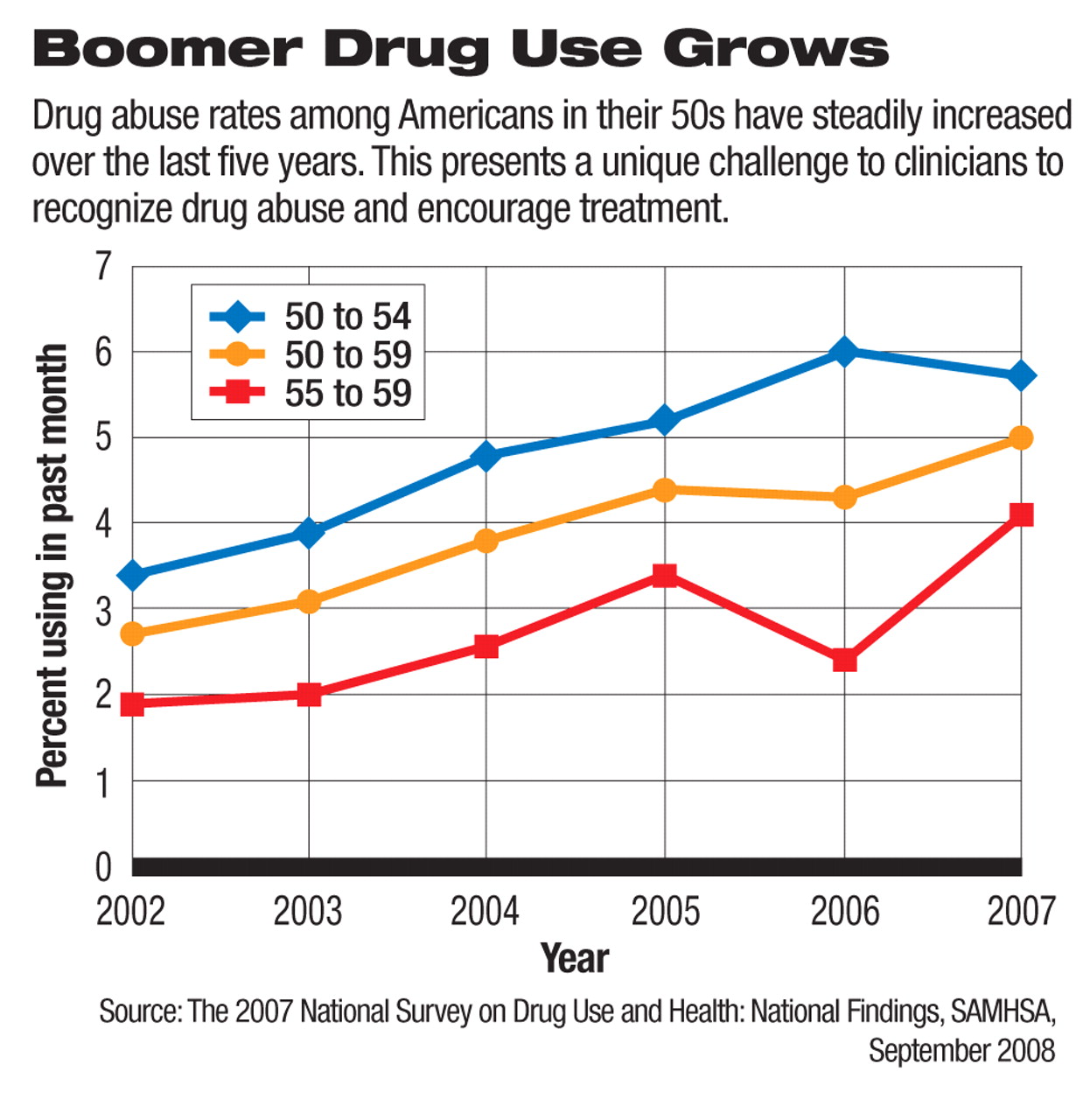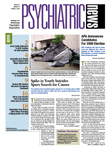Efforts to curtail a surge in drug and alcohol abuse among youth in the 1990s appear to be rolling back their usage rates, while older Americans are showing increasing rates of such abuse, according to new federal data.
Results from the 2007 National Survey on Drug Use and Health (NSDUH), released in September, included a finding that illicit drug use overall declined among adolescents aged 12 to 17, from 11.6 percent in 2002 to 9.5 percent in 2007. (“Current use” is defined as use in the past month.) The rate of current marijuana use among adolescents aged 12 to 17 dropped from 8.2 percent in 2002 to 6.7 percent in 2007. In addition, the estimated number of American adolescents aged 12 or older who used methamphetamine for the first time dropped from 299,000 in 2002 to 157,000 in 2007.
“Drug use among youth and young people is shockingly down,” said Eric Broderick, acting administrator of the Substance Abuse and Mental Health Services Administration (SAMHSA), at a press conference marking the release of the drug-use data.
The reductions in drug use were touted by federal officials as a major improvement from the rising rates of drug use among adolescents found in previous research.
The findings of the SAMHSA survey (formerly called the Household Survey) are based on interviews of a random sample of 67,500 people. The survey results are considered the primary-source data on the extent of illicit drug, alcohol, and tobacco use in the noninstitutionalized U.S. population aged 12 and older, according to federal health officials.
In contrast, the survey also found that illicit drug use in the month prior to the survey interview among Americans aged 50 to 54 had increased from 3.4 percent in 2002 to 5.7 percent in 2007. Similarly, among people aged 55 to 59, illicit drug use in the month before the subjects were surveyed increased from 1.9 percent in 2002 to 4.1 percent in 2007.
The increase among people in their 50s was attributed to the rising numbers of the post-World War II population cohort dubbed the Baby Boomers. They have historically had high rates of substance abuse, starting in the 1960s.
“We had the largest exposure to underage illicit drug and alcohol use of any age cohort before or since,” Broderick said about his fellow boomers.
Tackling this generation's early exposure and lingering acceptance of substance abuse as a “legitimate” recreational activity requires increased effort to integrate substance abuse and mental health screening and treatment into primary health care, according to federal health officials. Broderick emphasized that there are effective treatments available for substance abusers of any age, and at any age family, friends, and clinicians need to help them seek the care they need.
Increased intervention efforts by clinicians and those who know people with untreated substance abuse problems also can help convince the large number who need help to seek it. The survey estimated that 19.5 million people with substance use problems don't plan to seek assistance.
“That is something we have to address moving forward,” said John Walters, director of the White House Office on National Drug Control Policy.
Prescription Pain Killers More Popular
Although most categories of drug use declined, the nonmedical use of pain relievers slightly increased in the study period. The survey results estimated that 4.4 million people aged 12 and older were current nonmedical users of prescription pain killers in 2002, which increased to 5.2 million people in 2007.
In addition to prescription pain reliever abuse among adolescents, young adults also were affected. The survey found current use of prescription pain relievers among young adults aged 18 to 25 increased from 4.1 percent to 4.6 percent over the same five years.
The increases in the abuse of pain killers was particularly troubling, according to federal antidrug officials, because the survey found that most nonmedical users of pain relievers reported obtaining the drugs from a single physician.
“Clearly we have work to do among doctors and patients to stem the tide of illicit use of prescription drugs,” Walters said.
The problem is complex. Among the 57 percent of survey respondents who described nonmedical use of a prescription pain reliever stolen from a friend or relative, 80 percent said the friend or relative had obtained the drug from a single doctor. The finding indicated to federal officials that doctor-shopping by pain-killer abusers may be a smaller problem than theft of legitimately prescribed pain relievers.
H. Westley Clark, M.D., director of SAMHSA's Center for Substance Abuse Treatment, said physicians could help stem the increase in the nonmedical abuse of pain relievers through increased efforts to limit prescriptions and amounts of prescriptions to appropriate conditions. Patients also should be encouraged to promptly dispose of unneeded medications in an“ environmentally appropriate” manner that prevents drugs from ending up in the water supply.
Meanwhile, among the troubling trends revealed by the survey was that adolescent girls aged 12 to 17 have pulled even with boys in their rates of substance abuse. Educators need to address this trend by tailoring their prevention messages to address the specific peer-acceptance and dieting-related pressures that push girls into substance abuse, Walters told Psychiatric News.
Treatment Rate Stable
The mental health section of the annual survey found that the rate of adults seeking mental health care has remained fairly stable since 2002. About 13 percent of adults reported seeking any type of psychiatric treatment in the five years beginning in 2002, while 10 percent to 11 percent obtained prescription medication to treat psychiatric illness, and about 7 percent used outpatient treatment.
The rate of adults seeking care for depression dropped significantly from 2006 to 2007. Included in this reduction was the rate of adult women who had a“ major depressive episode” and sought care, which dropped from 74 percent in 2006 to 68 percent in 2007. However, Clark told Psychiatric News that the finding was likely a statistical anomaly that was not a trend seen in the preceding years and won't be borne out over a longer time period.

